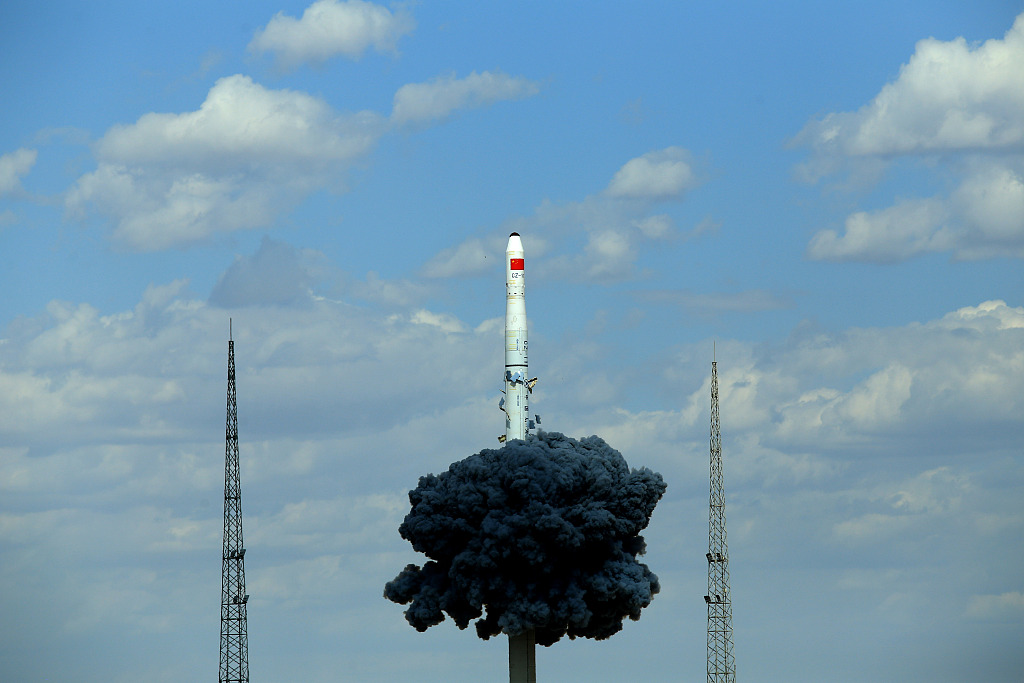BEIJING, Oct. 15 (Xinhua) -- Space engineers have made a key step in designing a new generation launch vehicle that could help start China's manned lunar exploration program, according to the China Aerospace Science and Technology Corporation (CASC).

China launched five new small remote sensing satellites on September 19, 2019, using a Long March 11 (Chang Zheng 11) rocket. (Photo: VCG)
A pre-study for the carrier rocket, conducted by the China Academy of Launch Vehicle Technology (CALT) under the CASC, has passed a review by the China Manned Space Agency.
The research, started in 2017, has produced an initial blueprint for the rocket, which will be about 87 meters long and have a takeoff weight of about 2,200 tonnes.
It could carry payloads of more than 25 tonnes to the lunar transfer orbit and would have a new escape system to improve astronaut safety.
As well as the mature engine and the highly reliable flight control technologies of the Long March-5 and Long March-7 carrier rockets, production of the rocket would feature advanced manufacturing technologies and new materials.
A detailed plan to develop the carrier rocket is now on the drawing board, according to the CASC.
It has been reported that China is pushing forward the pre-study of a manned lunar landing program.
Currently, China's largest carrier rocket has a payload capacity of about 8 tonnes to the lunar transfer orbit. The manned lunar landing program needs a more powerful and reliable new generation manned launch vehicle.


